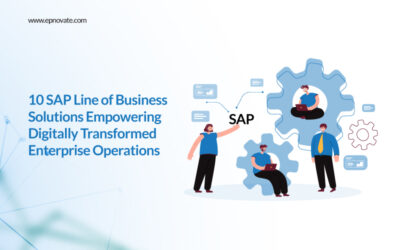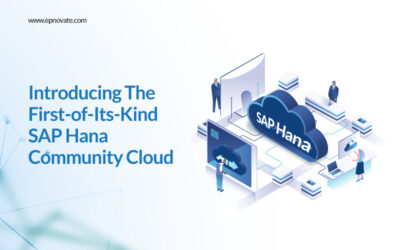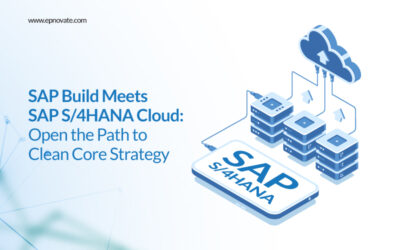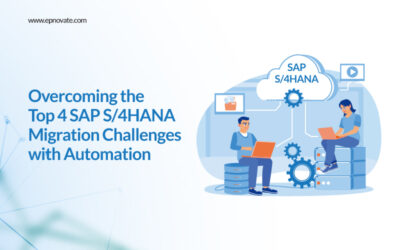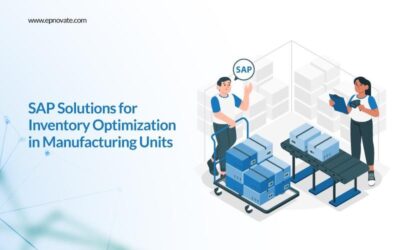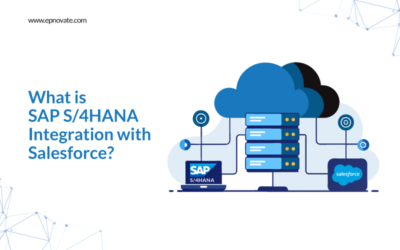Expert Guided Implementation: SAP S/4HANA Embedded Analytics

SAP S/4HANA is available in both on-premises and cloud models. SAP S/4HANA’s Embedded Analytics is the key innovation in this version of the enterprise resource planning (ERP) software. S/4HANA Embedded Analytics allow enterprises to streamline the data extraction, loading, transformation and batch processing methods.
The business suite provides real-time data for users and supports real-time analytics and insights. The architecture of SAP S/4HANA Embedded Analytics depends upon SAP ABAP Core Data Service (CDS) view for the backend while the front end user interacts with SAP Fiori.
SAP S/4HANA advantages
Migration to S/4HANA gives users access to a better business suite that works more efficiently and with less redundant data. The advantages of SAP S/4HANA can be categorised under two broad headings:
- Better built-in analytics: The interface of S/4HANA is more intuitive. This makes data processes simple. The built-in analytics, including Ariba, Concur, and Qualtrics, improve data and analytics in this ERP.
- Simplified ERP: The S/4 interface has a more efficient data model. This ensures users can remove redundant data. The built-in analytics are visually appealing and more efficient during processing.
SAP S/4 HANA Embedded Analytics
SAP S/4HANA uses SAP’s programming language (ABAP) to create virtual data models. The virtual data model allows seamless integration of business analytics (including transactions) and an insight into all the transactions so the user can have access to real-time analytics that support any business decision.
The user interacts with Embedded Analytics on Fiori and can access a set of tools that simplify data processing. Some of the tools provided to the user include Query Browser, Query Designer, SAP Lumiera, SAP BusinessObjects and SAP business intelligence.
These advantages are presented by the core component present in S/4HANA Embedded Analytics.
The core component of SAP S/4HANA Embedded Analytics: Virtual data model
SAP currently uses its own set of languages for tools, called core data services (CDS). Data models are often represented in the CDS view since the view has capabilities beyond traditional models. The CDS view supports relationship mapping, building, etc. Virtual data models built-in CDS views are the basis of SAP S/4HANA Embedded Analytics.
Core data services (CDS) hold all the metadata of the enterprise, allowing the two to work together to provide better data analytics. The virtual data models use CDS’ metadata to identify relationships between data sets and enrich the entities using business semantics.
Various types of CDS views can be used depending upon the requirement:
- Private view: The data view is hidden to the end-user and is used instead to transform underlying data into something useful for them.
- Interface view: These data views are reusable for the end-user. They are public and can be of multiple types: basic interface and composite interface.
- Consumption view: These are based on one or more types of interface views and are available to the end-user. These are often domain-specific and contain domain-specific analytics, search and other functions.
- Extension-include view: This type of view allows users to add additional fields for data processing. SAP-delivered extension view allows public access to data.
Historical and legacy data
Embedded Analytics is an excellent integration for enterprises that want accurate operational reporting. However, since Embedded Analytics focuses on operational reporting, using historical data and legacy data is inadvisable. Since the decision and analytics need to be focused on real-time data, consolidating old data (historical) is redundant, while legacy data (data from 3rd party sources) is not recommended by SAP itself.
Summary
SAP S/4HANA Embedded Analytics allows enterprises to maintain complete data transparency. The excellent data analytics and insights provided by the ERP can improve operational reporting for any enterprise and support business decisions. Integrating S/4HANA is seamless and can be completed by selecting the right SAP service partner. If you are looking for experts, Epnovate is the ideal partner.
Recent Posts
- 10 SAP Line of Business Solutions Empowering Digitally Transformed Enterprise Operations
- Choosing the Right SAP Implementation Partner: What Businesses Need to Know
- How to Future-Proof Your SAP ERP
- SAP Operations Continuity: 5 Priorities You Need to Embrace Today
- Introducing The First-of-Its-Kind SAP HANA Community Cloud
